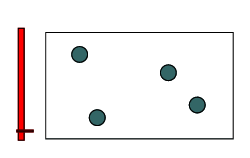Jet
engine |
|
| Jet
engines take in air, compress it, mix it with fuel and ignite the mixture.
The gas generated produces immense pressure inside the ignition chamber
and escapes from the nozzle creating tremendous thrust. As the gas escapes
from the rear of the engine a force is produced pushing the engine forwards
according to Newton's Third Law of Motion. |
 |
Jet
engines are so powerful that they can power commercial aircraft to supersonic
speeds. |
 |
Air,
being sucked into a jet, passes through several sets of rotating blades
known as a turbines. These blades compress the air before it enters the
ignition chamber. |
 |
Once in the ignition chamber
the air and fuel mixture is ignited. A great deal of heat is released
and more gas is created as a product of the combustion reaction . The
heat causes the gas molecules to accelerate at great speeds. This creates
enormous pressure in the ignition chamber and the gas molecules escape
out the nozzle with immense force. Look at the animation on the right
which shows the relationship between heat and speed of individual gas
molecules. |
|



